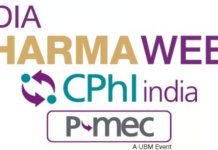Dr. Gaurav Goel, Consultant Surgical Oncologist, HCG Cancer Centre, Jaipur
In the landscape of women’s health, cervical cancer stands as a dark thread, woven with preventable strands. By untangling the risk factors associated with this silent threat, we gain a powerful grasp on our destiny. This article unveils the threads of vulnerability, offering practical tools to weave a fabric of resilience against cervical cancer, empowering women to claim their narrative of health and wholeness.
Cervical cancer, a leading cause of cancer-related deaths in women worldwide, is often preventable with the right knowledge and proactive measures. Understanding the risk factors associated with cervical cancer is the first step towards reducing the incidence of this disease. Through this article, we explore these risk factors and present simple ways to empower women in their journey towards minimizing the threat of cervical cancer.
Know Your Risk Factors
Cervical cancer is primarily linked to persistent infections of high-risk strains of Human Papillomavirus (HPV). Other risk factors include smoking, a weakened immune system, long-term use of oral contraceptives, multiple full-term pregnancies, and a family history of cervical cancer. Knowledge about these factors allows individuals to assess their own risk and take necessary precautions.
Cervical Cancer and HPV: HPV is a common sexually transmitted infection, and certain high-risk strains are strongly associated with cervical cancer. Regular screenings, such as Pap smears and HPV tests, are essential for early detection and intervention. Understanding one’s HPV status empowers individuals to take appropriate preventive measures, including vaccination for those who haven’t been exposed to the virus.
Simple Ways to Reduce Your Risk
Vaccination: The HPV vaccine is a powerful tool in preventing cervical cancer. Administered in early adolescence, the vaccine provides protection against the most common cancer-causing HPV strains. It’s not only a shield for young girls but also recommended for women up to the age of 26 who may not have received it earlier.
Safe Sex Practices: Consistent and proper use of barrier methods, such as condoms, reduces the risk of HPV transmission. Open communication with sexual partners about sexual health is crucial in maintaining a safe and healthy environment.
Quit Smoking: Smoking is a significant risk factor for cervical cancer. The harmful chemicals in tobacco can damage cervical cells and increase the risk of cancer. Quitting smoking not only benefits overall health but also plays a pivotal role in preventing cervical cancer.
Regular Screenings: Routine screenings, including Pap smears and HPV tests, are essential for early detection. Women should adhere to their healthcare provider’s recommendations for screenings, as they can detect abnormal changes in the cervix before they progress to cancer.
Maintain a Healthy Lifestyle: A strong immune system is crucial in fighting off infections, including HPV. A healthy lifestyle that includes a balanced diet, regular exercise, and sufficient sleep contributes to overall well-being and reduces the risk of cervical cancer.
Empowerment through Knowledge
Reducing the risk of cervical cancer is not only about adopting preventive measures but also about empowering individuals through knowledge. Educational campaigns, community outreach programs, and open discussions about sexual health play a pivotal role in increasing awareness and breaking down stigmas associated with cervical cancer.
In conclusion, understanding and mitigating cervical cancer risk factors are within our grasp. By adopting simple yet effective preventive measures and fostering a culture of openness about sexual health, we can collectively work towards a future where cervical cancer is a rare and preventable occurrence. It’s time to take charge of our health, embrace prevention, and stand united against the threat of cervical cancer.
























